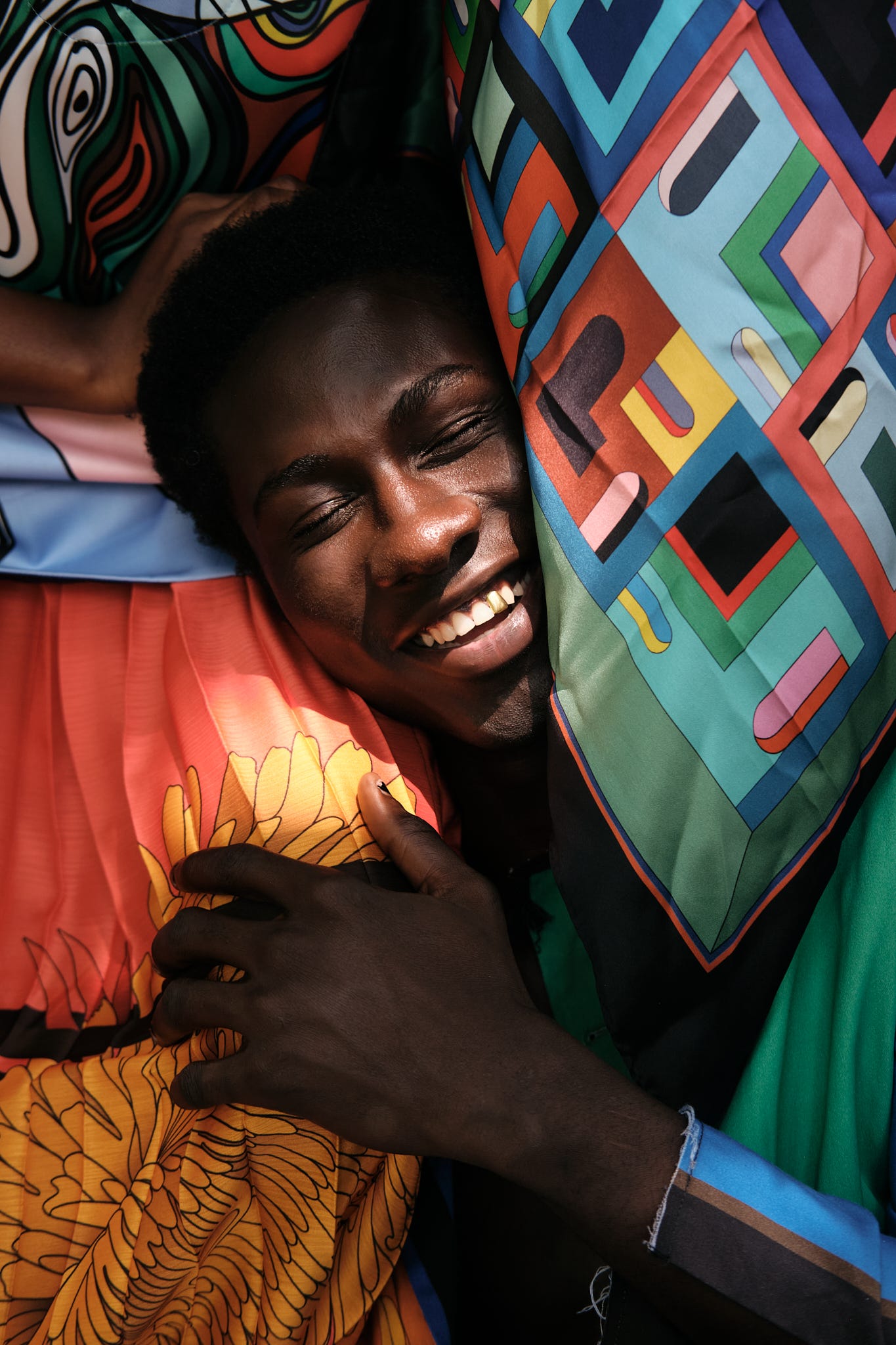Shut Eye
Photographs by Thero Makape, Hickmatu Leigh, Alfred Quartey, and Cole Ndelu, previously featured on Tender Photo.




The eye in a photograph is similar to an aperture: an opening through which light can pass. And just as the camera is an optical instrument for looking outwards, so the eye is never seen to be facing rearwards. A final similarity—if the analogy isn’t already strained—is that an eyelid, like a shutter, can stay shut.
A photograph can be taken in a microsecond, which makes it easier to depict people in the hairline of time between the blink of an eye. In such images, as in Thero Makepe’s portrait of his mother, there can be an intimation of a worship both wordless and private, as if what is required in response is a hush. Ra Pinkie’s serenity is akin to the woman in focus in Hickmatu Leigh’s photo: she is not in the middle of speech or a chorus, and neither does the angle of her head suggest the basin is overweight. With her eyes shut she seems to have withdrawn into an inner world.
This inner world is the space of thinking often known to none except the person whose face it is. “What’s on your mind?” a lover asks. A question Cole Ndelu’s photograph hints at; the intimacy is made apparent by how close the lens gets. The tenderness might be rehearsed, but it makes a point. “You can go in so many different ways when you’re exploring something as big, complicated and simple as love,” notes Ndelu. “I had always wanted to photograph Sami and Frypan together, and I was surprised by how easily it came together after so many years of planning and delays.”
There it is, then: a photograph of a shut eye can show an unembarrassed display of affection. In Alfred Quartey’s recollection, while waiting for the right conditions to take a photograph, a model dozed off in another model’s arms, and someone else made a joke about the sequence of events: “In that moment, everything stayed still, everything aligned. I immediately knew the photo was ‘complete,’ straight out of camera.”
For Makepe, the photograph is complete for reasons other than the timeliness of his shot. We see a face that has withdrawn its gaze, lost in a song or elegy, but there’s an anecdote even more profound. By the time he was born in 1996, his grandfather, a jazz musician, could no longer see, and remained impaired until his death. Recently he asked his mother what his photo meant to her. And she told him what it evokes. Sometimes, early in the morning, she’ll walk with her eyes closed, doing so on purpose to experience what it must have felt like for her father to move in darkness for 15 years. ••••
This is the #4 edition of CONCORDANCE, a series of micro-essays I’m writing in response to sequences of photographs previously featured on the newsletter. (See #1, #2, and #3) These notes, inspired by CORRESPONDENCES, will point to affinities in style, mood, or theme between the tendered photos. The series will run for an initial period of 2 months (June 3—July 29).
TENDER PHOTO is a bi-weekly newsletter on African photography, published Wednesdays and Saturdays. See the archive for more features on early to mid-career photographers, or submit your work. If this newsletter was shared with you, consider subscribing, or forward to a friend. Please whitelist the newsletter to ensure you never miss it.




I love these.
this was such a beautiful read